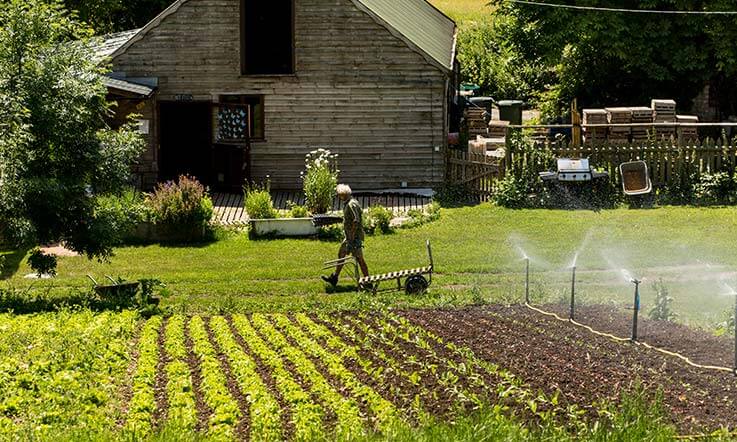The Towards Eco-energetic Communities (TWECOM) project has been investigating the economic potential of using biomass from landscape elements for local energy or heat production with respect for the current ecological, cultural and social functions that these landscape elements fulfil.
We have worked with farmers, land owners and the local community to develop a pilot energy co-operative using woody biomass from local landscape elements.
The project has brought farm hedges back into focus and sought to answer questions about whether biomass can be sustainably and economically harvested from hedgerows, and as such, whether hedges can be a viable source of woodfuel? Over the course of the project we have looked at these questions from various different angles investigating the impacts of hedge harvesting on our resident dormice population, hedgerow flora and soil carbon dynamics. We have tested machinery big and small to identify the best harvesting methods, weighed woodchip and measured our hedges, interviewed farmers and provided training and discussion forums to really get to the bottom of these questions.
The two main project outputs
The best practice guide is based on the machinery trials carried out on Elm Farm and Wakelyns Agroforestry. It also pulls together current and previous research, related projects, policy recommendations and management guidelines. The guide is aimed at farmers and landowners, agricultural and forestry contractors, conservation organisations and local authorities interested in managing hedges for woodfuel. It focuses on the logistics and practicalities as well as methods and machinery selection. It outlines how and why you might manage your hedges for woodfuel, includes advice on how to select appropriate hedges, how to plan the management, what the machinery and processing options are as well as the economics and any legal considerations.
The main objectives of the biodiversity protocol are to:
The protocol is designed for use by farmers, landowners and advisors and is largely based on a set of indicators selected to provide quantitative links between, for example, habitat quality or structural diversity and biodiversity. Indicators were selected using a range of sources including a review of current literature and a synthesis of existing knowledge. Methods for measuring each indicator were tested in the field during the protocol development phase. The protocol consists of three main components: an Excel assessment tool, a User guide, and a series of surveys (with accompanying survey notes) carried out on the hedges and on associated taxa (butterflies, bumblebees, birds, and ground flora).
